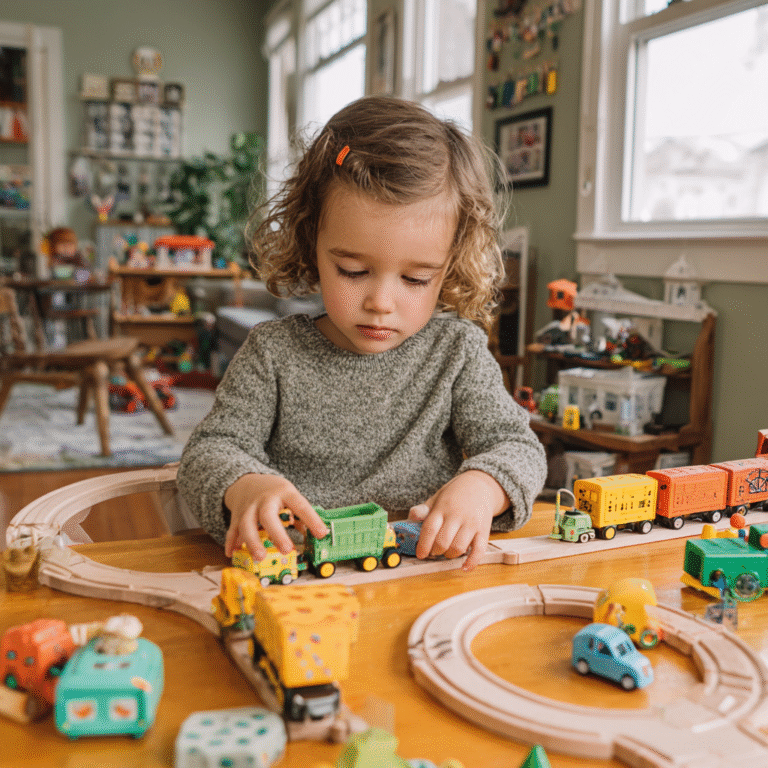If you’re a parent or caregiver, you’ve probably experienced the toy overload struggle—piles of toys everywhere, yet somehow your little one still claims they’re “bored.” Enter the magic of toy rotation! This simple but effective strategy not only keeps playtime fresh and exciting but also helps reduce clutter and stress for everyone. In this post, we’ll share some easy and creative toy rotation ideas to keep your child engaged, foster imagination, and make playtime feel like a whole new adventure—without breaking the bank or exhausting your patience. Let’s dive in!
Table of Contents
- Benefits of Toy Rotation for Child Development and Family Harmony
- Creative Ways to Organize and Store Toys for Easy Rotation
- How to Choose the Right Toys for Each Rotation Cycle
- Tips for Introducing Rotated Toys to Keep Kids Engaged and Excited
- The Conclusion
Benefits of Toy Rotation for Child Development and Family Harmony
Embracing toy rotation can work wonders for your child’s development by continuously sparking curiosity and creativity. When toys are rotated regularly, children are less likely to feel overwhelmed, allowing them to engage deeply with each item and discover new ways to play. This focused attention enhances cognitive skills such as problem-solving and imaginative thinking. Additionally, toy rotation promotes better decision-making as kids learn to appreciate the value of each toy over time, rather than seeking instant gratification through constant new acquisitions.
Families also benefit immensely from this simple strategy. Reduced clutter means fewer tantrums over lost or ignored toys, leading to a calmer, more organized home environment. Parents gain the advantage of managing toy mess with ease, creating more quality time for meaningful interactions rather than cleanup battles. Some added perks include:
- Improved sharing and patience among siblings as they anticipate new toy turns
- Cost savings by maximizing use of existing toys without impulse buying
- Encouragement of mindful consumption habits from an early age
This harmonious approach to play fosters both joyful learning and a peaceful household dynamic.
Creative Ways to Organize and Store Toys for Easy Rotation
Keeping toys fresh and exciting is all about clever storage solutions that make rotation a breeze. Consider using clear bins with labels to separate toy categories or age groups. This makes it easy to swap out selections without overwhelming your child or yourself. Another fun option is to repurpose a hanging shoe organizer for small toys and figures—each pocket can hold a different set, ready to be rotated in and out of playtime.
Don’t underestimate the power of furniture that doubles as storage! Ottomans, benches, or coffee tables with hidden compartments keep toys out of sight but within easy reach when it’s time to introduce a new batch. For the tech-savvy, try a toy library system: pack toys in baskets or crates labeled with dates or themes, and use a simple app or calendar reminder to switch them regularly. This keeps playtime feeling fresh and avoids the toy clutter battle.
How to Choose the Right Toys for Each Rotation Cycle
Start by considering your child’s current interests and developmental stage to select toys that will engage and challenge them appropriately. Choose a mix of sensory, imaginative, and problem-solving toys to keep playtime well-rounded and stimulating. For example, if your little one is into building, include blocks or construction sets, while for a toddler exploring textures, soft fabric books or textured balls work great. Rotating toys that target different skills ensures they remain fresh and exciting, preventing boredom and promoting continuous learning.
Another key factor is variety in play styles and materials. Include open-ended toys, like wooden trains or simple dolls, alongside more structured options like puzzles or art supplies. This balance allows your child to explore creativity and structure, providing opportunities for independent and guided play alike. To make rotations easy on you, group toys by theme or function in labeled baskets or bins. This system not only keeps your space tidy but also helps you gauge which toys are most loved, making future rotations even simpler and more tailored to your child’s preferences.
Tips for Introducing Rotated Toys to Keep Kids Engaged and Excited
When introducing rotated toys, start by creating a little excitement around the “new arrivals.” Try unveiling the toys with a simple story or adventure scenario that sparks curiosity. For example, you could say, “Look what came from the toy treasure chest today!” This playful approach helps build anticipation and encourages kids to dive right in. Additionally, involve them in the selection process by letting them choose which toys come out next—this not only gives them a sense of control but also boosts their enthusiasm for playtime.
Keep the transition smooth by pairing newly introduced toys with familiar favorites. This mix can help prevent overwhelm and make the shift feel natural. To maintain fresh interest, rotate toys in small batches rather than all at once, which keeps the environment inviting without causing frustration. Don’t forget to observe your child’s reactions; sometimes unexpected favorites emerge, and paying attention can help tailor future rotations to their evolving interests.
- Use labeled bins or boxes for easy toy swaps and organization.
- Schedule consistent rotation days to establish a comforting routine.
- Introduce thematic rotations like nature, animals, or building blocks.
The Conclusion
And there you have it—simple, creative toy rotation ideas to keep playtime fresh, fun, and stress-free for both you and your little ones. Remember, the goal isn’t to have every toy out all
Related Products
-
SHEGLAM Press Refresh Setting Spray Moisturizing L…
Beauty $6.99 -
Two Piece Lounge Sets for Women Fold Over Flare Pa…
Clothing $16.99 -
Sale!
Fiskars Garden Harvest Basket – Container for Gard…
Home Original price was: $40.99.$21.99Current price is: $21.99.

